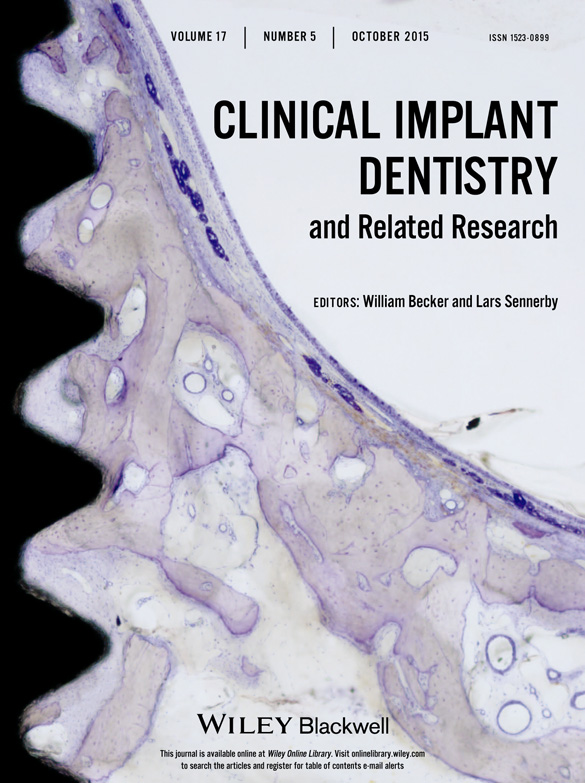Primary Stability of a Hybrid Implant Compared with Tapered and Cylindrical Implants in an Ex Vivo Model
Abstract
Background
Hybrid implants are thought to offer good stability and bone-implant contact.
Purpose
This study sought to evaluate the primary stability of a hybrid implant compared with tapered and cylindrical implants in an ex vivo model and compare undersized drilling with standard drilling in attaining primary stability.
Materials and Methods
Hybrid (Straumann® Bone Level; BL), tapered (Straumann® Tapered Effect; TE), and cylindrical (Straumann® Standard Plus; SP) implants were inserted into 15 mm–thick porcine iliac crest blocks using standard (corticocancellous or cancellous bone) or undersized (cancellous bone only) drilling (n = 7). Stability was evaluated using maximum insertion torque (MIT), implant stability quotient (ISQ), and push-out tests.
Results
The mean MIT for BL and TE was significantly higher than that for SP (p < 0.05). With standard drilling in corticocancellous bone, the mean ISQ for TE was significantly higher than that for SP (p < .05). The mean MIT, ISQ, and push-out test scores for BL, TE, and SP with standard drilling in corticocancellous bone were significantly higher than those with undersized or standard drilling in cancellous bone (p < .05).
Conclusions
In this ex vivo model, the hybrid implant demonstrated promising primary stability compared with the cylindrical implant. The improved stability of the hybrid implant was especially evident in cancellous bone. The influence of the cortical layer should be recognized when selecting implants for primary stability.




